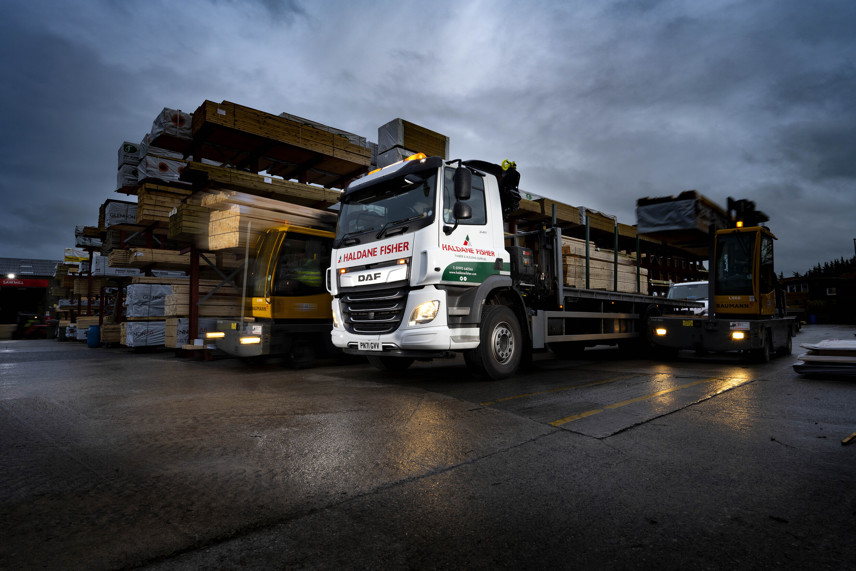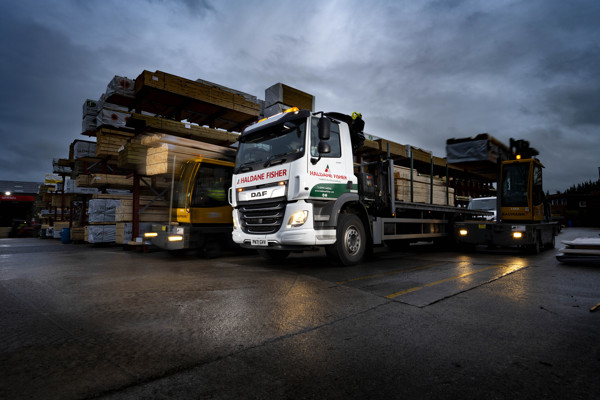Review
When most people mention the Daf CF model, they usually refer to the well respected and popular tractor unit or the wide range of three and four axle rigids with an endless group of three letter acronyms at the end their specification sheet.
Daf has two product offerings at the maximum gross vehicle weight for two axle rigids with the CF accompanied by the lighter LF range but , of course, very rarely is one operation the same as another and each has their advantages and disadvantages in this very diverse sector.
Let’s not forget the two axle rigid market is still an important sector within the UK heavy truck market so we thought it worthwhile to stop and have a look at this ‘unsung hero’ and answer the question what does the 18 / 19 tonne CF 4x2 have to offer compared to the LF?
The well proven Paccar PX-7 is the main choice of power for the two axle rigid, this 6.7 litre six cylinder Euro VI compliant engine starts at 234 bhp ( 172kW) developed at 2300 rpm and a maximum torque of 900Nm running along the rev range from 1000 to 1700 rpm.
For those requiring more power, there are a further three output setting, the 264 bhp ( 194kW) developed at 2300 rpm with 1000 nm of torque between 1000 rpm and 1700 rpm. The higher power outputs are 295 bhp ( 217kW) again developed at 2300 rpm but with 1100Nm of torque between 1000 and 1700 rpm.
This was until recently, the most powerful engine output available but this has since been surpassed by the 325 bhp ( 239kW) variant rated version with 1200 Nm of torque but starting at a slightly higher rev range between 1100 to 1700 rpm.
In all cases, the engine features exhaust gas recirculation (EGR), diesel particulate filter (DPF), and selective catalytic reduction (SCR) as well as an active soot filter.
Behind any of these power ratings sits a six speed manual transmission as standard with a 0.78 overdrive on sixth, but there are a further four gearbox options ensuring whatever operation you are on, there will be a solution for you.
Continuing the manual gearbox theme there is a nine speed option, also an automated AS Tronic gearboxes with six and twelve speeds and finally a fully automatic five speed completes the choice.
Finding a suitable chassis length shouldn’t be a problem, as DAF offers 12 chassis lengths, irrespective of cab type and there’s three of those as well!
The chassis lengths start at those catering for your typical tippers and skip loaders at 4 m all the way up to the distribution friendly 7.3m.
Of course, chassis lengths aren’t much use without knowing the recommended body lengths and these start at 5.1m to over 10m, 10.36m to be specific, assuming a uniformly distributed load. This is one of the areas were the CF holds an advantage over the LF with an extra metre in bodylength but at an obvious weight penalty.
As far as unladen weights are concerned the CF starts at 5592kgs on the shortest wheelbase with the day cab and up to 6011kgs on the longest, with the sleeper cab adding around 50kgs and then the Space cab certainly for drawbar applications, a further 110kgs approximately heavier. Its worth noting DAF’s unladen weight figures are calculated with the standard specification, 200 litres of fuel, 25 litres of Adblue and allows 90kg for a driver.
Running at the maximum two axle gross vehicle weight of 19 tonnes, the front axle is plated at 7.5 tonne with 315/70R22.5 tyres and the single reduction rear axle is plated at 11.5 tonne with the same tyre size. Parabolic springs at the front and air suspension on the rear are standard but rear springs can be specified if necessary.
Whilst the gross vehicle weight is 19 tonnes and unusually so is the combination weight although 22500kgs, 26000kgs and 28000kgs as well as 32000kgs gross combination weight can be specified subject to certain driveline requirements and, of course, their respective costs.
Braking starts with the engine exhaust brake which can deliver up to 221bhp (165kW) of braking power, this is supplemented by disc brakes with lane departure warning and vehicle stability control. There is also adaptive cruise control which integrates a forward collision alert systems and automatic emergency braking level three.
As mentioned earlier there are three cabs, the day cab, sleeper cab and space cab. Outside the familiar CF design has electrically operated and heated mirrors, LED daytime running lights and tinted glass. Inside there’s a driver air suspended ‘comfort’ seat, glass roof hatch with manual control, electric windows and automatic temperature control and air conditioning.
The Daf CF has been with us for many years and in many cases is seen as the ‘workhorse’ of the DAF range. This latest version at 19 tonnes is no different, it has an excellent proven driveline with three great cab options enabling it to fill the need for those seeking an urban skip loader to a high capacity distribution drawbar. No wonder the CF has became a familiar sight on UK and European roads.

















